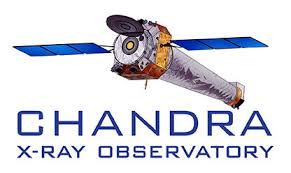HEAD 20 Meeting
Press Information
22 March 2023
Virtual Press Conference at 20th Meeting of High Energy Astrophysics Division
The 20th meeting of the American Astronomical Society (AAS) High Energy Astrophysics Division (HEAD) is being held in Waikōloa, Hawaiʻi, from Sunday, 26 March, through Thursday, 30 March 2023. We will hold a press conference via Zoom on Tuesday, 28 March, to showcase exciting discoveries related to the superlative gamma-ray burst GRB 221009A.
Press Conference Schedule and Speakers
The press conference will be conducted via Zoom for members of the press and any meeting registrants wishing to attend. It will also be live-streamed on the AAS Press Office YouTube channel for other interested people. You will not be able to ask questions via YouTube — to do that, you need to join the briefing via Zoom. The briefings will be archived on the AAS Press Office YouTube channel afterward.
Following is the press-conference program, which remains subject to change. The briefing is scheduled for Tuesday, 28 March, at 8:00 am Hawaii Standard Time (2:00 pm EDT/18:00 UTC). The briefing will last approximately 1 hour, including time for Q&A. The briefing participants are as follows:
• Eric Burns (Louisiana State University) [Presentation slides]
• Kate D. Alexander (University of Arizona) [Presentation slides]
• Andrew Levan (Radboud University) [Presentation slides]
• Sergio Campana (National Institute for Astrophysics, Italy) [Presentation slides]
• Michela Negro (University of Maryland, Baltimore County) [Presentation slides]
View recording on YouTube
All findings are embargoed until the time of presentation at the meeting. “Time of presentation” means the start time of the session in which the paper will be given, or the start time of the corresponding press conference (if any), whichever comes first. See the complete AAS/HEAD embargo policy for more information.
Note: All new discoveries are subject to confirmation by independent teams of scientists. Inclusion here does not imply endorsement by the American Astronomical Society or the High Energy Astrophysics Division. The AAS and HEAD do not endorse individual scientific results.
Contacts:
Megan Watzke
Chandra X-ray Center, Cambridge, MA
+1 617-496-7998
mwatzke@cfa.harvard.edu
Dr. Kerry Hensley
American Astronomical Society
+1 202-328-2010 x138
kerry.hensley@aas.org
The High Energy Astrophysics Division (HEAD), established in 1969, assists and promotes the advancement of research and the dissemination of knowledge about high energy events, particles, quanta, relativistic gravitational fields, and related phenomena in the astrophysical universe. HEAD also promotes the coordination of this research and knowledge with other branches of science.
The American Astronomical Society (AAS), established in 1899, is a major international organization of professional astronomers, astronomy educators, and amateur astronomers. Its membership of approximately 8,000 also includes physicists, geologists, engineers, and others whose interests lie within the broad spectrum of subjects now comprising the astronomical sciences. The mission of the AAS is to enhance and share humanity’s scientific understanding of the universe as a diverse and inclusive astronomical community, which it achieves through publishing, meetings, science advocacy, education and outreach, and training and professional development.





